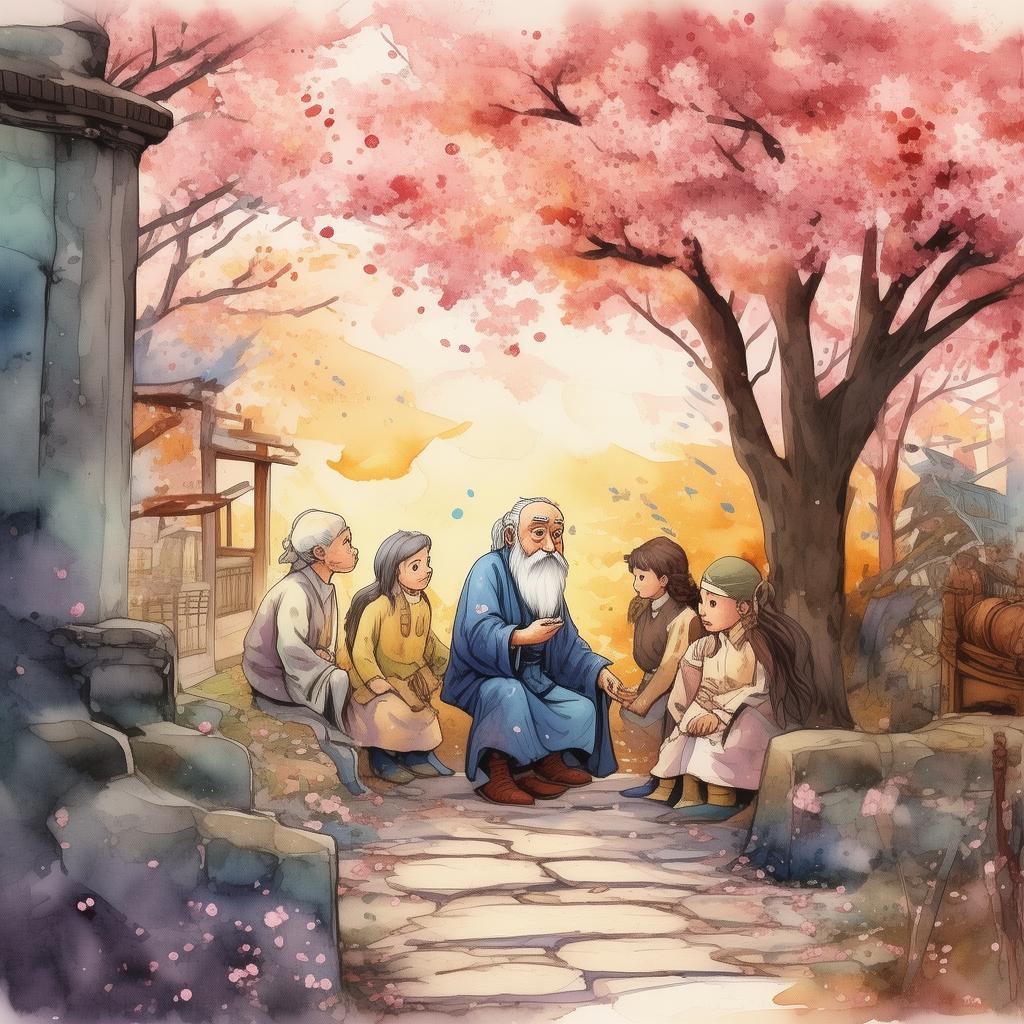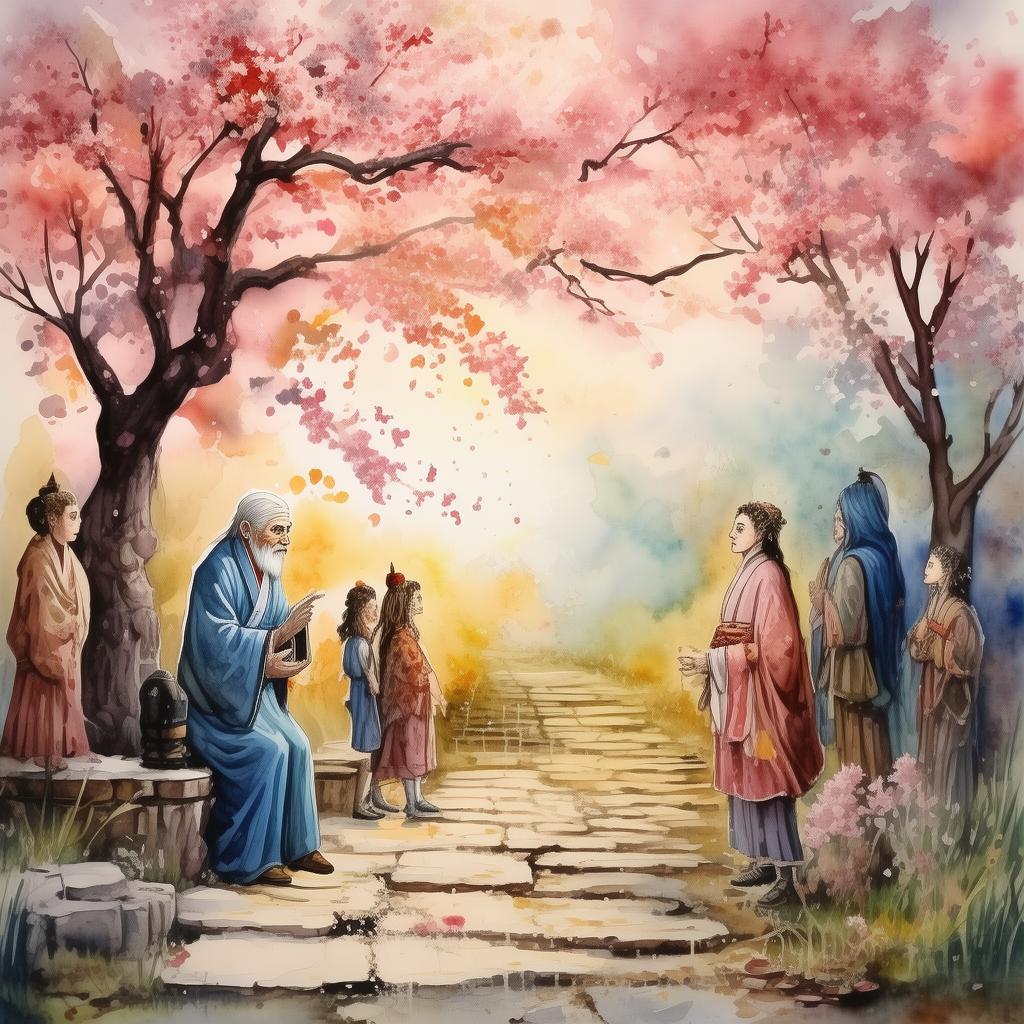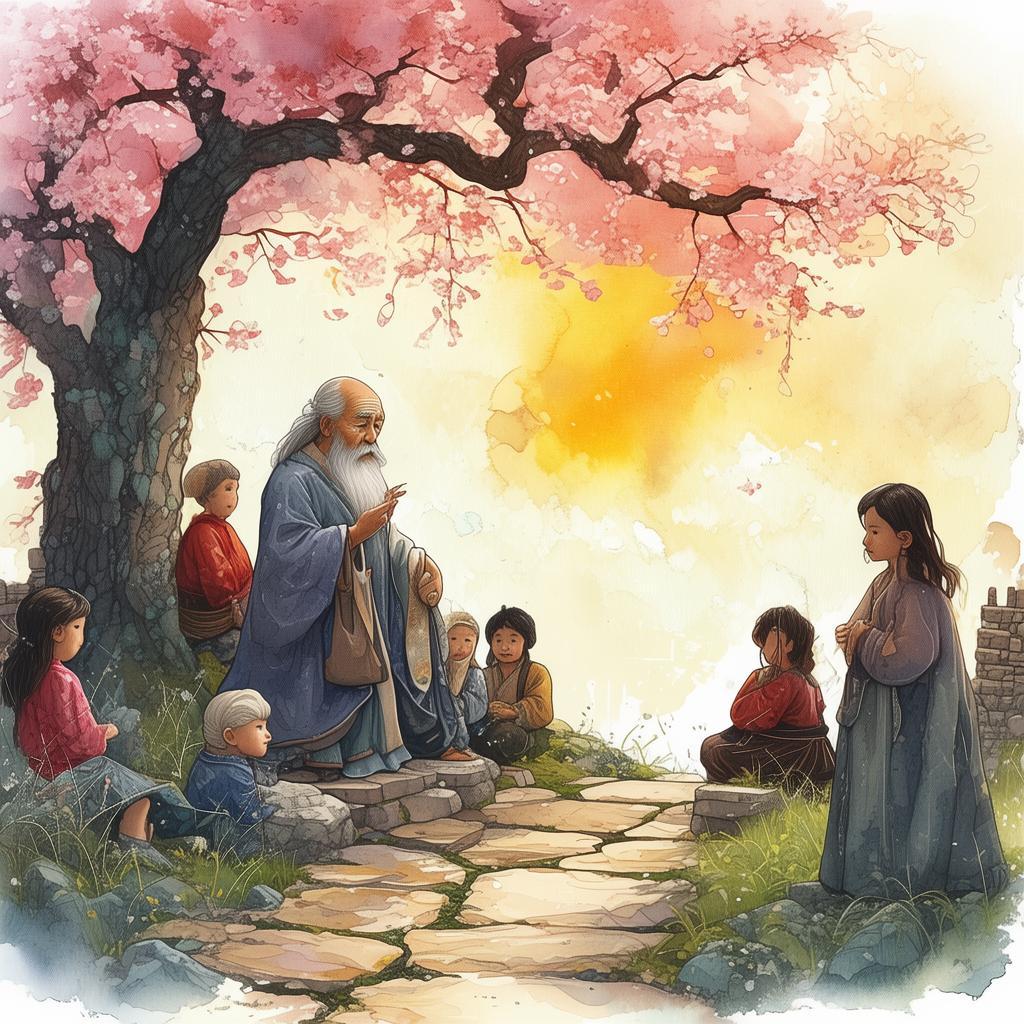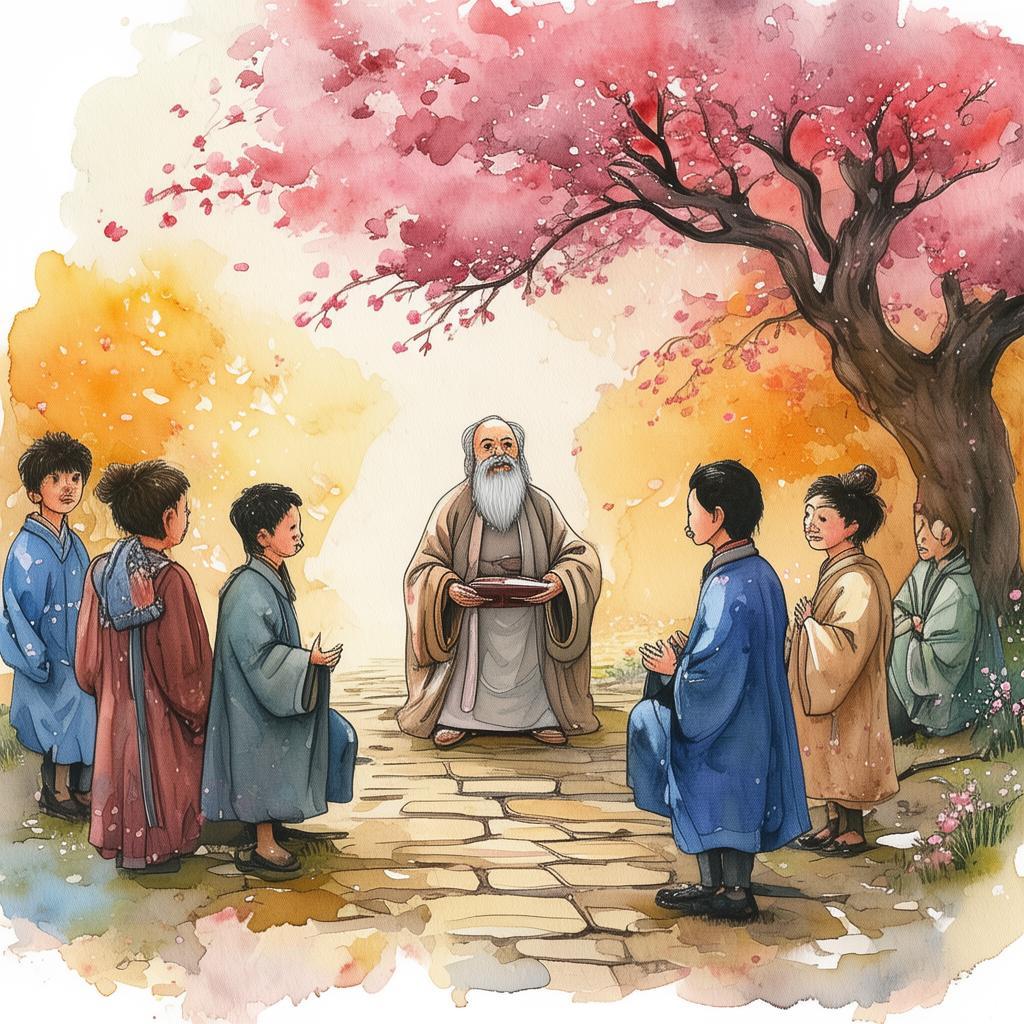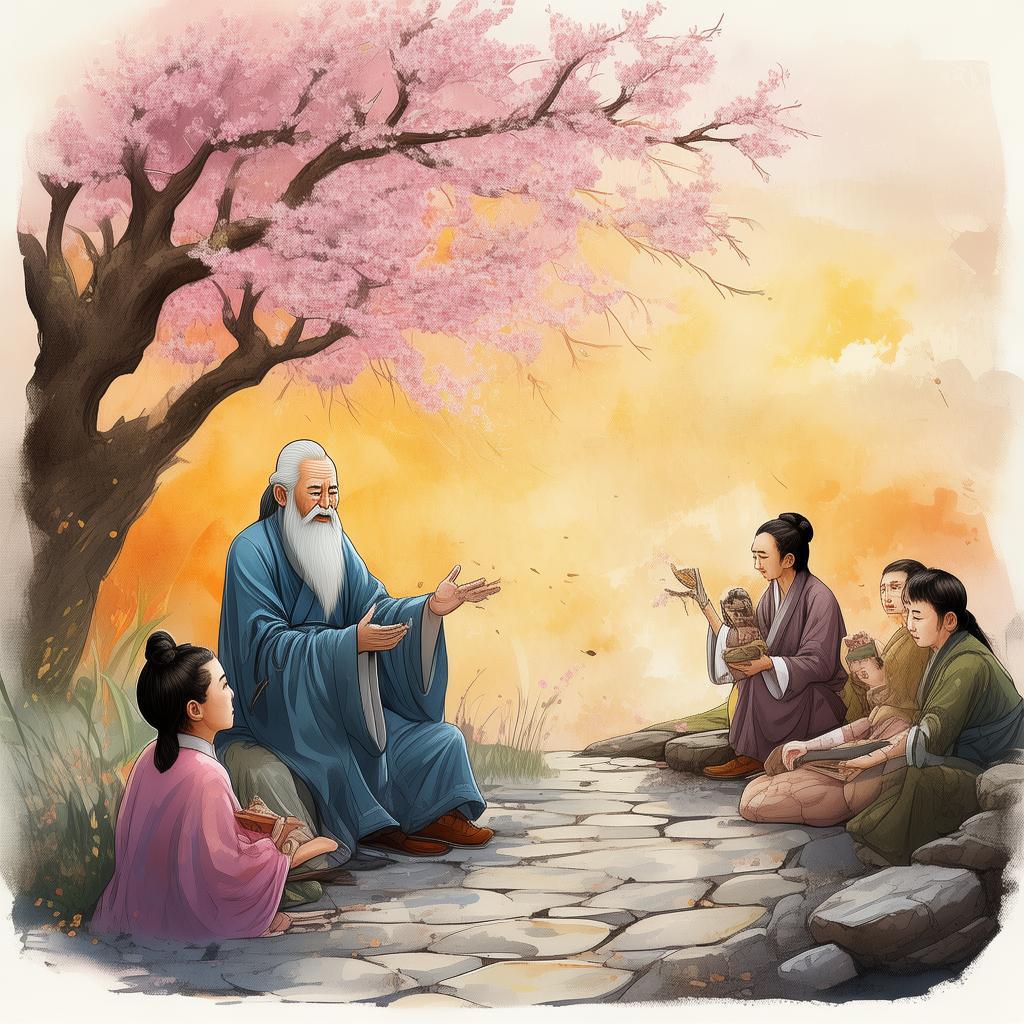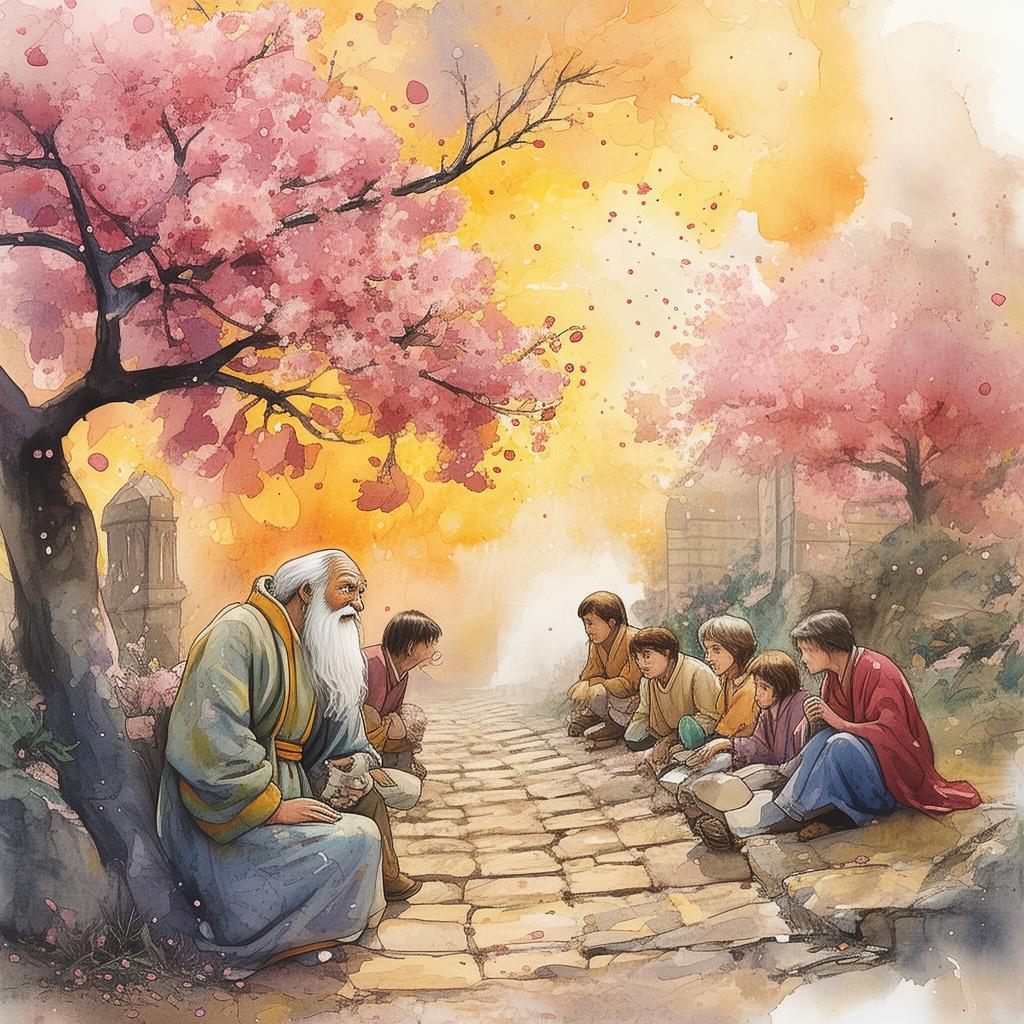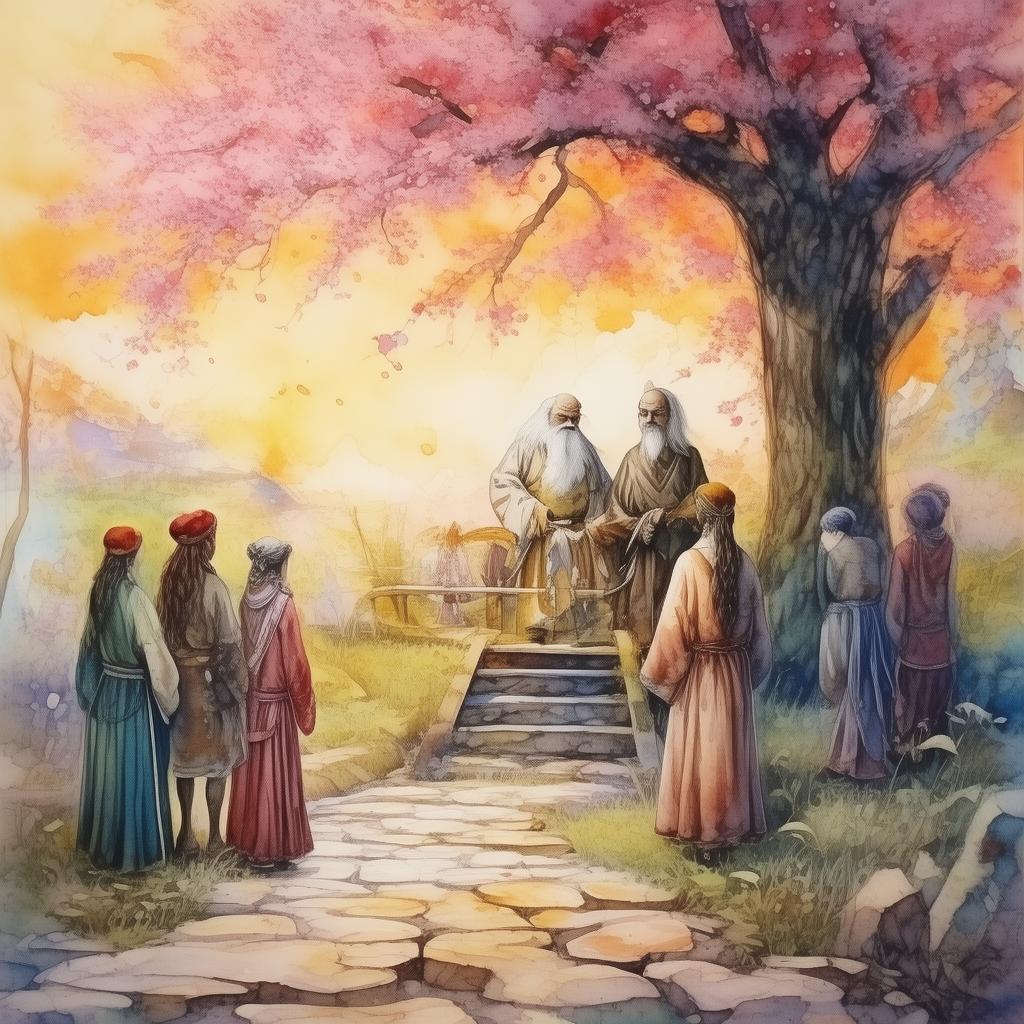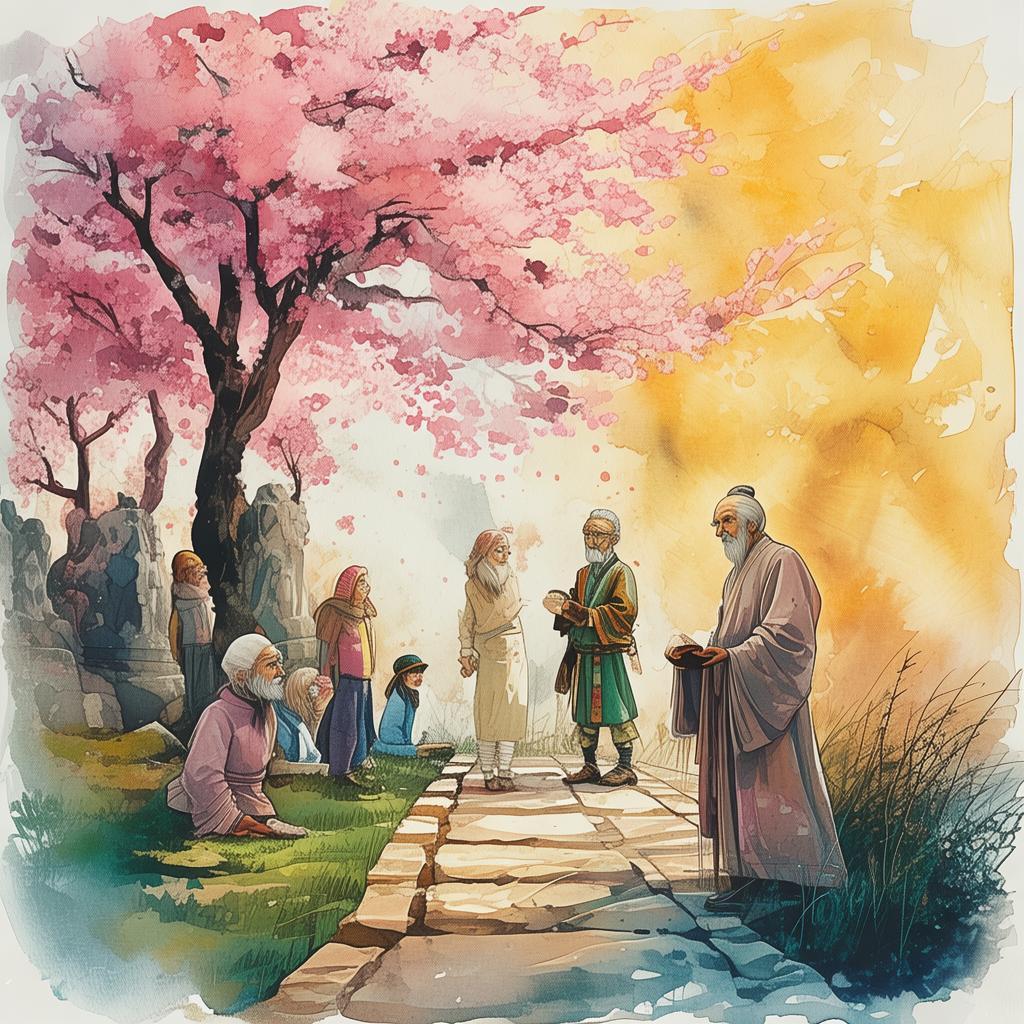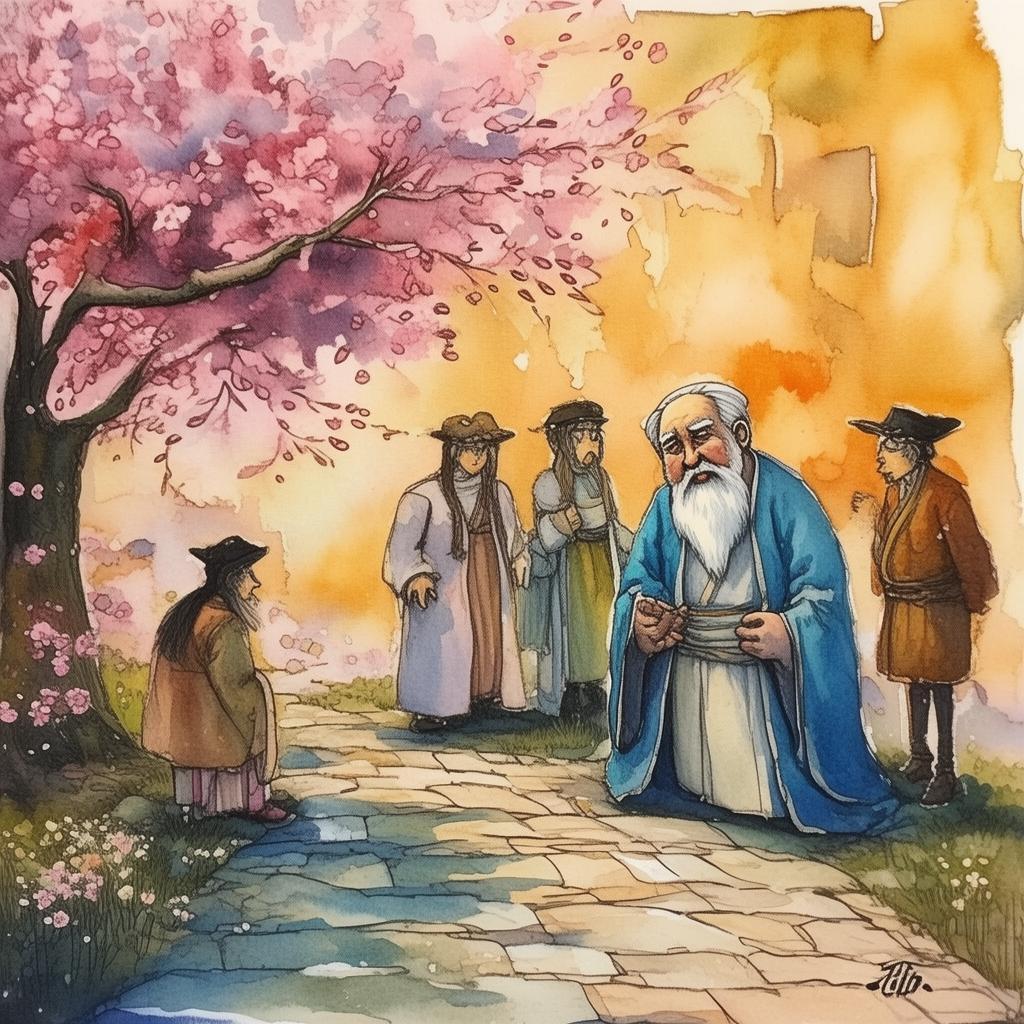The Calligrapher's Quest: The Birth of the Pen
In the heart of the ancient city of Chang'an, where history and legend intertwined like the strokes of a calligrapher's brush, there lived a man known as Master Li. Master Li was not just a calligrapher; he was a guardian of the written word, a keeper of the ancient scripts that had been passed down through generations. His hands, nimble and skilled, danced over the paper, tracing characters with the precision of a master.
One day, as Master Li was deep in thought, a curious visitor knocked on his door. It was a young scholar named Ming, who had heard tales of Master Li's unparalleled knowledge of calligraphy. Ming had a proposition: he wished to embark on a quest to uncover the origin of the characters that adorned the scrolls and tomes of ancient China.
Master Li's eyes sparkled with a mixture of curiosity and trepidation. The quest Ming spoke of was no ordinary task. It was a journey that would take them to the very roots of Chinese civilization, to the times when the first characters were drawn on cave walls and bones.
With the consent of his students and the blessing of his ancestors, Master Li and Ming set out on their quest. They traveled through deserts and mountains, their path marked by the footprints of history. They visited ancient temples, seeking wisdom from the monks who had preserved the traditions of old. They even ventured into the depths of the Yellow Mountains, where it was said the ancient sages had meditated and chiseled the characters onto stone.
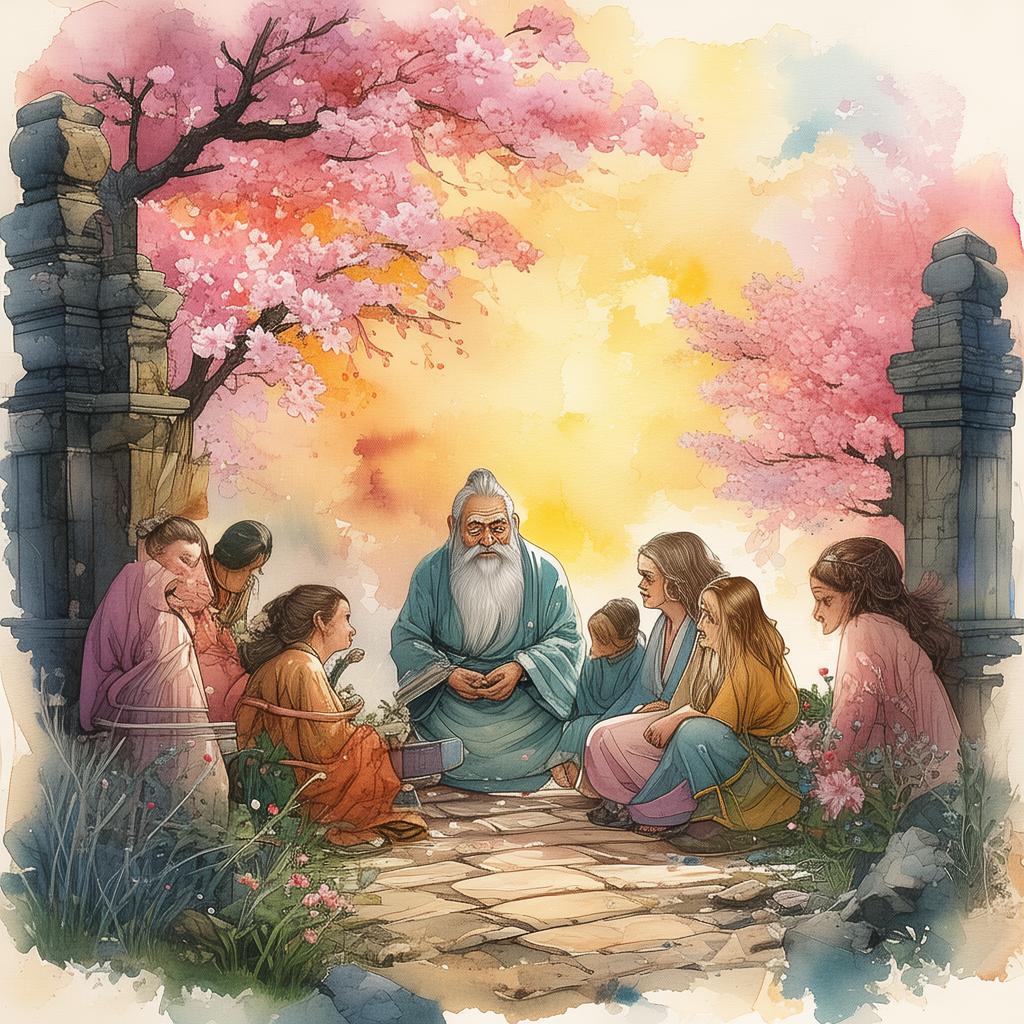
As they journeyed, they encountered many challenges. There were times when the path was treacherous, and they had to rely on each other's strength and determination to continue. But the bond between Master Li and Ming grew stronger with each obstacle they overcame.
Finally, after months of travel, they reached the place where the story of the characters began. It was a cave hidden deep within the mountains, its entrance veiled by vines and moss. Inside, the walls were adorned with ancient carvings, each character a testament to the creativity and ingenuity of the ancestors.
Master Li and Ming spent days studying these carvings, each stroke a piece of the puzzle they were trying to solve. They realized that the characters were not just symbols; they were alive, carrying the essence of the people who had created them. The characters had evolved over time, taking on new meanings and forms, but their core remained unchanged.
One evening, as the sun set over the mountains, casting a golden glow on the cave walls, Master Li had a revelation. He realized that the characters were not just a medium of communication; they were a bridge connecting the past to the present. They were the voice of the ancestors, speaking through the ages.
In that moment, Master Li decided to write a scroll, a scroll that would encapsulate the essence of the characters and their journey. He began to trace the characters with his brush, each stroke a testament to his love for the art and his respect for the ancestors.
The scroll took days to complete, and when it was finally finished, Master Li and Ming unrolled it with bated breath. The characters were beautiful, each one a work of art, and the story they told was one of perseverance, of the indomitable spirit of the human race.
As the story spread throughout the land, it brought a new appreciation for the characters and their creators. The calligraphy became more than just an art form; it became a way of life, a tradition that would be passed down through generations.
Master Li's quest had come to an end, but his journey had just begun. The characters, with their ancient wisdom, had found a new life in the hearts of the people, and their story would continue to be told for centuries to come.
In the end, Master Li understood that the power of the characters was not just in their form or their meaning, but in the connection they created between the past and the present. The characters were the essence of Chinese civilization, a legacy that would endure for eternity.
In the heart of the ancient city of Chang'an, where history and legend intertwined like the strokes of a calligrapher's brush, there lived a man known as Master Li. Master Li was not just a calligrapher; he was a guardian of the written word, a keeper of the ancient scripts that had been passed down through generations. His hands, nimble and skilled, danced over the paper, tracing characters with the precision of a master.
One day, as Master Li was deep in thought, a curious visitor knocked on his door. It was a young scholar named Ming, who had heard tales of Master Li's unparalleled knowledge of calligraphy. Ming had a proposition: he wished to embark on a quest to uncover the origin of the characters that adorned the scrolls and tomes of ancient China.
Master Li's eyes sparkled with a mixture of curiosity and trepidation. The quest Ming spoke of was no ordinary task. It was a journey that would take them to the very roots of Chinese civilization, to the times when the first characters were drawn on cave walls and bones.
With the consent of his students and the blessing of his ancestors, Master Li and Ming set out on their quest. They traveled through deserts and mountains, their path marked by the footprints of history. They visited ancient temples, seeking wisdom from the monks who had preserved the traditions of old. They even ventured into the depths of the Yellow Mountains, where it was said the ancient sages had meditated and chiseled the characters onto stone.
As they journeyed, they encountered many challenges. There were times when the path was treacherous, and they had to rely on each other's strength and determination to continue. But the bond between Master Li and Ming grew stronger with each obstacle they overcame.
Finally, after months of travel, they reached the place where the story of the characters began. It was a cave hidden deep within the mountains, its entrance veiled by vines and moss. Inside, the walls were adorned with ancient carvings, each character a testament to the creativity and ingenuity of the ancestors.
Master Li and Ming spent days studying these carvings, each stroke a piece of the puzzle they were trying to solve. They realized that the characters were not just symbols; they were alive, carrying the essence of the people who had created them. The characters had evolved over time, taking on new meanings and forms, but their core remained unchanged.
One evening, as the sun set over the mountains, casting a golden glow on the cave walls, Master Li had a revelation. He realized that the characters were not just a medium of communication; they were a bridge connecting the past to the present. They were the voice of the ancestors, speaking through the ages.
In that moment, Master Li decided to write a scroll, a scroll that would encapsulate the essence of the characters and their journey. He began to trace the characters with his brush, each stroke a testament to his love for the art and his respect for the ancestors.
The scroll took days to complete, and when it was finally finished, Master Li and Ming unrolled it with bated breath. The characters were beautiful, each one a work of art, and the story they told was one of perseverance, of the indomitable spirit of the human race.
As the story spread throughout the land, it brought a new appreciation for the characters and their creators. The calligraphy became more than just an art form; it became a way of life, a tradition that would be passed down through generations.
Master Li's quest had come to an end, but his journey had just begun. The characters, with their ancient wisdom, had found a new life in the hearts of the people, and their story would continue to be told for centuries to come.
In the end, Master Li understood that the power of the characters was not just in their form or their meaning, but in the connection they created between the past and the present. The characters were the essence of Chinese civilization, a legacy that would endure for eternity.
✨ Original Statement ✨
All articles published on this website (including but not limited to text, images, videos, and other content) are original or authorized for reposting and are protected by relevant laws. Without the explicit written permission of this website, no individual or organization may copy, modify, repost, or use the content for commercial purposes.
If you need to quote or cooperate, please contact this site for authorization. We reserve the right to pursue legal responsibility for any unauthorized use.
Hereby declared.
